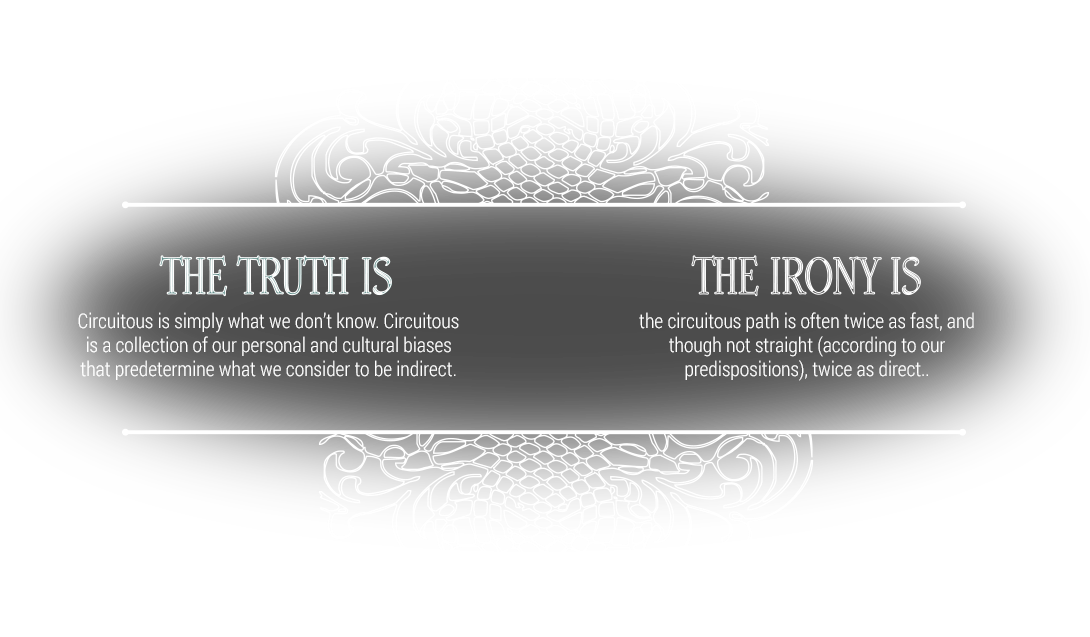The word ‘circuitous’ make most people want to throw themselves in front of a train. We want the journey and destination to be seconds apart, preferably instantaneous, especially as it relates to complex relationships and challenging situations. We are obsessed with speed and direct paths. The faster and easier, the better.
We are scared the circuitous path is going to take far too long, be emotionally exhausting and potentially a complete waste of time. So, we diagnose superficial problems and formulate clear decisive plans of action. We are more concerned with solving the problem than figuring out what exactly the problem really is.
For example, if we sense some kind of aching emotional emptiness we are more inclined to run from it, around it, over it or tackle it directly with some kind of pre-proven plan than we are to figure out what is at the bottom of it.



On deep matters of the heart, we assume the problem is anything other than what it is. We assume the solution is anywhere other than where it is. When none of our solutions work, we assume we are not working at it hard enough, not approaching it smart enough, not approaching it creatively enough. Or perhaps we are just not well-rested enough, medicated enough, spiritual enough. Quite simply, WE are not enough. So instead of tackling what IS wrong, we tackle ourselves, like some kind of freaky home improvement project.
Out of our fear that exploring the real problem is going to lead to an emotional three-ring circus, we create exactly that. We think maybe if we became better tightrope walkers or more skilled jugglers; perhaps if we just spin more plates or learn to eat fire—not be so terrified of being shot out of another cannon. We make all kinds of assumptions that take us miles and miles away in the opposite direction of ourselves.
I have frustration even when I choose to confront whatever it is head on. To look at it directly, it does not just stand up and offer itself bold-faced and clearly, articulately stating its origin and its purpose. It is foggy, murky, a dark bog miles long.
It is fruitless to wrap your arms around it in hopes of containing it. It is pointless to squint your eyes and try to see inside it. It is opaque and obtuse. It is not obstinate intentionally. It is not the enemy. It is merely the unconscious, which needs to be connected with in a different kind of way.
Out of our fear that exploring the real problem is going to lead to an emotional three-ring circus, we create exactly that. We think maybe if we became better tightrope walkers or more skilled jugglers; perhaps if we just spin more plates or learn to eat fire—not be so terrified of being shot out of another cannon. We make all kinds of assumptions that take us miles and miles away in the opposite direction of ourselves.
I have frustration even when I choose to confront whatever it is head on. To look at it directly, it does not just stand up and offer itself bold-faced and clearly, articulately stating its origin and its purpose. It is foggy, murky, a dark bog miles long.
It is fruitless to wrap your arms around it in hopes of containing it. It is pointless to squint your eyes and try to see inside it. It is opaque and obtuse. It is not obstinate intentionally. It is not the enemy. It is merely the unconscious, which needs to be connected with in a different kind of way.


The shortest distance between you and it is not the straight line of logic. It is the circuitous path. I have found three kinds: planned; unplanned and the combination. Each connects in its own way to an insight, revelation or simple understanding that cannot be reached by conventional means.

The planned kind obviously involves a conscious act of defiance. When not just dressed up permutations of procrastination or avoidance, these acts can be quite powerful.
They are easily done when there is lots of time and little pressure. However, in high-pressured situations where there is a lot at stake and little time, it’s not so easy. Taking a break from brainstorming to go for a walk when your deadline is five days away—easy peasy. Doing the same thing when it is due in three hours—totally different story.
Here’s an example: Early on in my career, I was working on a freelance project for an ad agency representing the U.S. Postal Service in Chicago. We had to show our executive creative director three kick-ass campaigns at four o’clock. It was two. We had one campaign. We had been banging our heads against the same insights we had all week to no avail.
Here’s an example: Early on in my career, I was working on a freelance project for an ad agency representing the U.S. Postal Service in Chicago. We had to show our executive creative director three kick-ass campaigns at four o’clock. It was two. We had one campaign. We had been banging our heads against the same insights we had all week to no avail.
Finally, my partner got up and said “I’m going to Borders to listen to this CD I’ve been wanting to hear. (Flashback to 1996) Want to come?” I was aghast. Outraged. What could he possibly be talking about? “NOW???” I chided. “At a time like this? I think we need to buckle down and figure this thing out,” I said, adding in a slightly more mild-mannered hopeful tone, “Don’t you think?”
“Nope.” He said and he grabbed his coat. I followed him offering countless objections as to why this made no sense at all. And finally he turned around and said, “That’s exactly why.”
I went across the street with him, figuring at
“Nope.” He said and he grabbed his coat. I followed him offering countless objections as to why this made no sense at all. And finally he turned around and said, “That’s exactly why.”
I went across the street with him, figuring at
least I could keep talking to him on the way there and while we were there. Once there, he put headsets on my ears and said, “Listen to this.” Dave Matthews, “Crash into Me” CD had just come out. It blew my mind. I listened to thirty minutes of songs before even remembering the project. We returned full of energy and a killer campaign based on the power of a dream derived from the lyric, “in a boys’ dream…” We presented only two campaigns. The “Dream” was a hit. Our creative director said it was unexpected and fresh. No idea how our concept had come from such a ho-hum creative brief.
It is not new, the idea of walking away to get out of your own way. But it’s hard to do.
It is not new, the idea of walking away to get out of your own way. But it’s hard to do.

There is also the unplanned circuitous path.
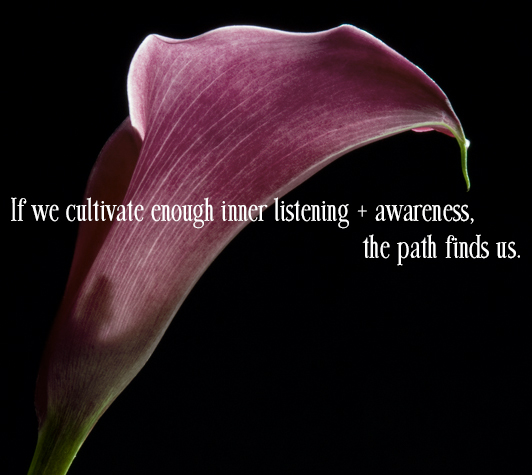
There is also the unplanned circuitous path. This is a bit trickier to explain and considerably trickier to recognize when it comes your way. It requires a heightened state of awareness in which you are always ready, even if only under the surface of your awareness, for serendipity, synchronicity, coincidence—to occur.
Sometimes it comes as a simple gift of nature. For example, I was trying to figure out what to do about a passive-aggressive e-mail a disgruntled teacher wrote. The thinking darted around in my head like this: Even though I know she is overworked and frustrated, she still could have handled it more kindly, and by the way, I’m tired too, and does it make sense to write a curt e-mail back or ignore it, but with buried feelings of animosity.
As I blankly looked out the window, past my thoughts, into the autumn morning, a bright red Japanese maple leaf fell slowly, with a pendulum-like lilt to the ground. And I got it. Let it go. Move on. The obvious simplicity made me laugh out loud to myself.
Had any person told me to do this, especially me, it would have been met with defensive resistance. But an innocent leaf? Yes, okay.
Sometimes it comes as a simple gift of nature. For example, I was trying to figure out what to do about a passive-aggressive e-mail a disgruntled teacher wrote. The thinking darted around in my head like this: Even though I know she is overworked and frustrated, she still could have handled it more kindly, and by the way, I’m tired too, and does it make sense to write a curt e-mail back or ignore it, but with buried feelings of animosity.
As I blankly looked out the window, past my thoughts, into the autumn morning, a bright red Japanese maple leaf fell slowly, with a pendulum-like lilt to the ground. And I got it. Let it go. Move on. The obvious simplicity made me laugh out loud to myself.
Had any person told me to do this, especially me, it would have been met with defensive resistance. But an innocent leaf? Yes, okay.
This insight was not reachable with the logic of pros and cons. I was too ego-driven to trust in the wisdom of seeking out a circuitous path. But thankfully, if we cultivate enough inner listening and awareness, the path finds us. In unplanned circumstances it reaches out and says, hey, genius perhaps this might help…
Unfortunately, the method of disruption is not always so gentle.
For example, one morning I was running and as I landed on my left leg, my hamstring seized. I crumpled over to the side of the road, tears streaming down my face. It was painful to be sure, but the tears were about something else. They were murky tears that had been waiting, it seemed, for a reason to release.
My internal dialogue went like this: I keep running to lose weight and it’s not working and my body hurts and I can’t do it. I am so tired. I cannot eat less. I cannot work out more. I don’t want to feel so disappointed in myself all the time.
I cried for some time. And then I laid all the way back onto some person’s sunlit front yard and gave up. After a while, I heard my husband’s kind voice say, you know the opposite must always be true. So I considered it. I am not eating enough and I am running too much.
Unfortunately, the method of disruption is not always so gentle.
For example, one morning I was running and as I landed on my left leg, my hamstring seized. I crumpled over to the side of the road, tears streaming down my face. It was painful to be sure, but the tears were about something else. They were murky tears that had been waiting, it seemed, for a reason to release.
My internal dialogue went like this: I keep running to lose weight and it’s not working and my body hurts and I can’t do it. I am so tired. I cannot eat less. I cannot work out more. I don’t want to feel so disappointed in myself all the time.
I cried for some time. And then I laid all the way back onto some person’s sunlit front yard and gave up. After a while, I heard my husband’s kind voice say, you know the opposite must always be true. So I considered it. I am not eating enough and I am running too much.

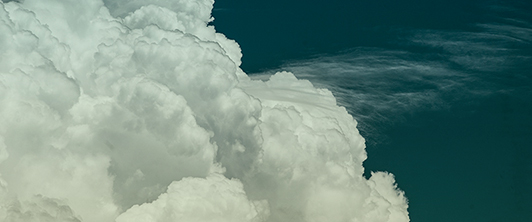
Maybe, I thought, my strategy is flawed. I know about good nutrition. I know breakfast is important. I know existing on nuts, fruit, salad and green shakes beginning after 2 p.m. is not a proper diet. But when I get stressed, I forget.
Maybe instead of trying harder, I need to try different. It was a pivotal thought, beyond just considering wheat toast and eggs for breakfast. It was heavier than the weight of pounds. For me, the thinner my thinking, the thicker I feel.
Maybe instead of trying harder, I need to try different. It was a pivotal thought, beyond just considering wheat toast and eggs for breakfast. It was heavier than the weight of pounds. For me, the thinner my thinking, the thicker I feel.
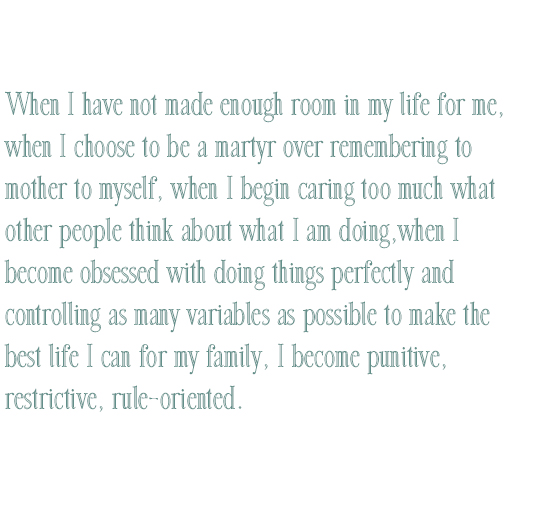

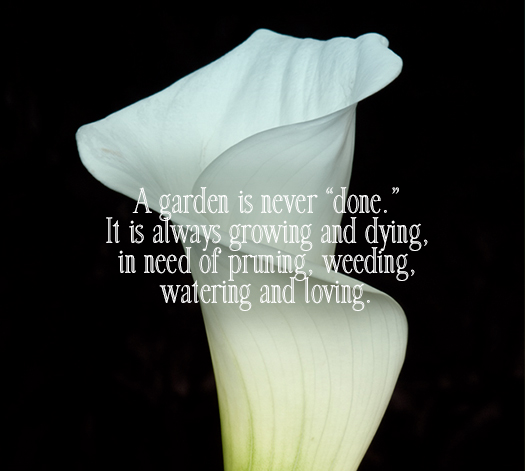
Sometimes, the body has to send the SOS. And the message of my pulled hamstring was STOP. Stop working out. Stop starving myself of kindness. And start feeding myself a healthier diet of gentleness, patience and fun. Most of us starve ourselves of something vital when we become overworked or worried.
Feeling like I am carrying around more weight than I want to is always a metaphor for the choices I have made that leave me hungry for more. Food is the least of it.
In The Gifts of Imperfection, researcher Brene Brown talks about the 10 guideposts for living from a place of worthiness, living whole-heartedly. This is a very different strategy than most of us employ. What she suggests letting go of is what most of think is keeping us alive.
Her approach is one way in to the idea I mentioned earlier about trying different, not harder. I love her choice of the word cultivate. Not reach for or aspire to—not another goal-oriented task, but rather a nurturing, a tending to—the way you would a garden.
Feeling like I am carrying around more weight than I want to is always a metaphor for the choices I have made that leave me hungry for more. Food is the least of it.
In The Gifts of Imperfection, researcher Brene Brown talks about the 10 guideposts for living from a place of worthiness, living whole-heartedly. This is a very different strategy than most of us employ. What she suggests letting go of is what most of think is keeping us alive.
Her approach is one way in to the idea I mentioned earlier about trying different, not harder. I love her choice of the word cultivate. Not reach for or aspire to—not another goal-oriented task, but rather a nurturing, a tending to—the way you would a garden.


THE COMBINATION
Here is one last personal example from our family life at the writing of this chapter.
Part One is simply “The Situation.”
Part Two is “The Unplanned Circuitous Path.”
Part three is “The Planned Circuitous Path.”
And Part Four is “The Message” in which parts one through three come together.
Part One is simply “The Situation.”
Part Two is “The Unplanned Circuitous Path.”
Part three is “The Planned Circuitous Path.”
And Part Four is “The Message” in which parts one through three come together.
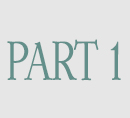
Our sons are usually incredibly well-behaved boys. The past few days they had been whining, bickering and being generally bitchy to each other. Early one Wednesday morning, I asked them, in a nice tone, to stop. They continued. Again I asked civilly. Again, they continued. Again I asked. Again they bickered.
And then, my voice like a whale surfacing from being trapped underwater, beneath a fleet of steamer ships, unable to breathe, erupted into the room full force—swelling eyes and quivering hands with its voluminous intensity. “I cannot do this anymore,” I boomed, “You have to start listening to me when I ask you to stop. You must be nice to each other.”
I felt immediately ashamed, irritated and resentful that they had pushed me to that response. I blabbered on about respect and kindness and peace until my outburst seemed, sort of, sufficiently justified.
The straight ahead path, based on logic, research and common sense would have been two fold: One, set up an incentivized reward chart for them to be kinder to each other and two, find more time for me to meditate and get a grip. We’ve executed this plan before with good success. But this seemed different.
And then, my voice like a whale surfacing from being trapped underwater, beneath a fleet of steamer ships, unable to breathe, erupted into the room full force—swelling eyes and quivering hands with its voluminous intensity. “I cannot do this anymore,” I boomed, “You have to start listening to me when I ask you to stop. You must be nice to each other.”
I felt immediately ashamed, irritated and resentful that they had pushed me to that response. I blabbered on about respect and kindness and peace until my outburst seemed, sort of, sufficiently justified.
The straight ahead path, based on logic, research and common sense would have been two fold: One, set up an incentivized reward chart for them to be kinder to each other and two, find more time for me to meditate and get a grip. We’ve executed this plan before with good success. But this seemed different.
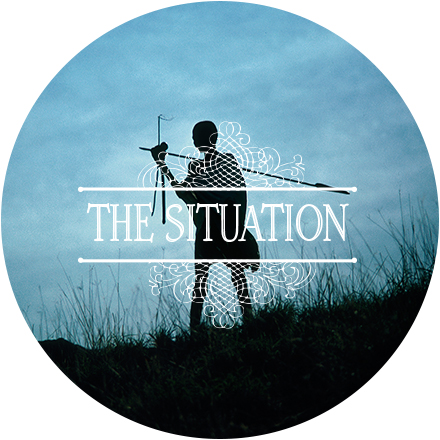
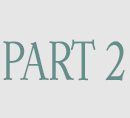
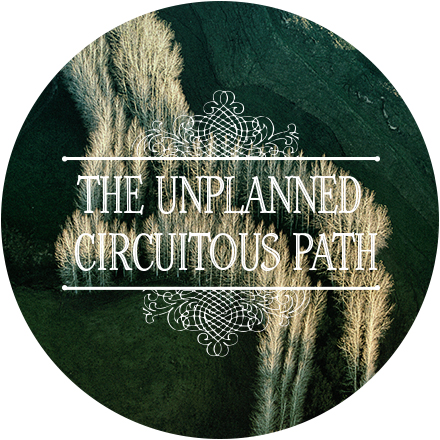
One hour later that same morning our son, Leo, was reading the next chapter of “A Wrinkle In Time” to me. We had been reading chapters back and forth to each other. That particular morning, we read Chapter Five: The Tesseract. Then he left for school.
I drank my coffee and stared out the window for a while. I remembered reading Madeline L‘Engle’s book in the fourth grade about Meg’s journey to save her father, who had been kidnapped into a different dimension. I did not understand what it meant that she had to tesser through time to reach him. Nor, did I understand what the title of the book meant.
I had not known until Leo read it to me that morning and the character Mrs. Whatsit explained that they travel by tessering, which involves taking shortcuts through time and space, like a wrinkle in time. Mrs. Whatsit demonstrates this by gathering together the fabric of her skirt into a wrinkle. These shortcuts, she explained, reveal that the shortest distance between two points is not a straight line. This was a revelation—a revolution in my understanding of my beloved childhood book, Einstein’s theory of relativity and the as-of-yet-still-undecided-way I was going to address “The Situation.”
I drank my coffee and stared out the window for a while. I remembered reading Madeline L‘Engle’s book in the fourth grade about Meg’s journey to save her father, who had been kidnapped into a different dimension. I did not understand what it meant that she had to tesser through time to reach him. Nor, did I understand what the title of the book meant.
I had not known until Leo read it to me that morning and the character Mrs. Whatsit explained that they travel by tessering, which involves taking shortcuts through time and space, like a wrinkle in time. Mrs. Whatsit demonstrates this by gathering together the fabric of her skirt into a wrinkle. These shortcuts, she explained, reveal that the shortest distance between two points is not a straight line. This was a revelation—a revolution in my understanding of my beloved childhood book, Einstein’s theory of relativity and the as-of-yet-still-undecided-way I was going to address “The Situation.”
This swum around in my mind as I continued gathering addresses for our holiday cards, sent a loving message to my friend Robyn, who had just lost her grandmother and congratulated my close friend and work partner Tom, who had just closed on his NYC apartment.
Then, I read chapter nine of “The Presence Process,” in which author Michael Brown says, “If we give to ourselves unconditionally the resonance of whatever we have been trying to get from everyone else, we receive everything we need and require…Lack is a resonance that arises from not having the capacity to feed ourselves emotionally. The resonance then manifests as mental stories and physical circumstances.”
It suddenly became clear. Of course! My sons’ lack of listening to me was about my lack of listening to myself. The morning’s situation was simply a reflection of that. That I happened to read chapter five in “A Wrinkle In Time” and chapter nine in “The Presence Process” on the particular morning of The Situation could not have been planned. But they led directly to the next stretch of my circuitous path that was planned.
Then, I read chapter nine of “The Presence Process,” in which author Michael Brown says, “If we give to ourselves unconditionally the resonance of whatever we have been trying to get from everyone else, we receive everything we need and require…Lack is a resonance that arises from not having the capacity to feed ourselves emotionally. The resonance then manifests as mental stories and physical circumstances.”
It suddenly became clear. Of course! My sons’ lack of listening to me was about my lack of listening to myself. The morning’s situation was simply a reflection of that. That I happened to read chapter five in “A Wrinkle In Time” and chapter nine in “The Presence Process” on the particular morning of The Situation could not have been planned. But they led directly to the next stretch of my circuitous path that was planned.
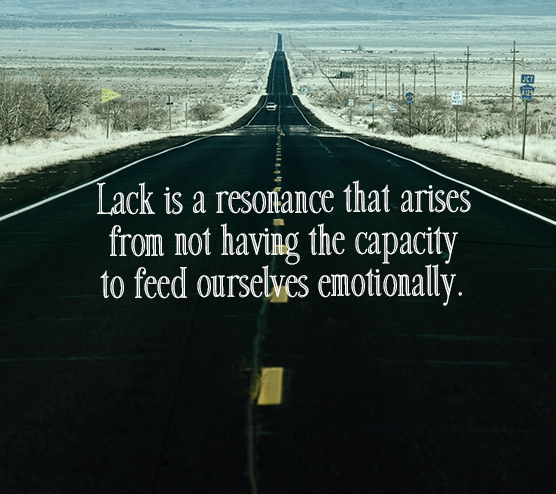
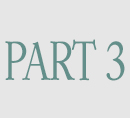
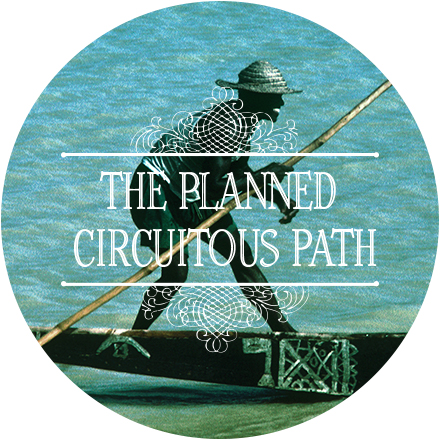
Knowing the framework of what The Situation was really about did not provide a clear answer as to how I should resolve it.
Creative meditating works well for me. If I pose a question and wait, I am always given images and messages. Where they come from is inconsequential. The insights they provide are always helpful. They have a way of wrinkling space and time and allowing wisdom to come from a different source. to how I should resolve it.
So, I closed my eyes and asked to hear and see where I was feeling unheard, feeling a lack. to how I should resolve it.
The only thing worse than someone dragging you through their dream is someone torturing you with a creative visualization. So, I will not do that. The one powerful and instructional image was this. There was a small girl trapped in a cage. She jump-stomped her feet and the cage turned into a field run wild with daisies and sunlight.
Creative meditating works well for me. If I pose a question and wait, I am always given images and messages. Where they come from is inconsequential. The insights they provide are always helpful. They have a way of wrinkling space and time and allowing wisdom to come from a different source. to how I should resolve it.
So, I closed my eyes and asked to hear and see where I was feeling unheard, feeling a lack. to how I should resolve it.
The only thing worse than someone dragging you through their dream is someone torturing you with a creative visualization. So, I will not do that. The one powerful and instructional image was this. There was a small girl trapped in a cage. She jump-stomped her feet and the cage turned into a field run wild with daisies and sunlight.

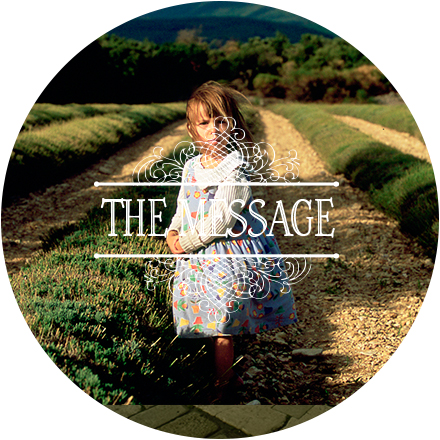
Room. I needed more room for myself. I was not a victim of the commitments I’d made. I did not have to feel trapped by the bars I had set for myself. I could stomp-jump my way into a beautiful spaciousness. It was up to me. I didn’t need my anger to protect me if I was willing to free myself.
This was my circuitous path. The message would have been impossible without the visualization, which would not have happened without having read the two chapters, which would not have been relevant without the situation.
An openness to alternative creative routes leads to destinations not reachable by logic. This is the landscape of invention, of possibility. It is a different way to travel, to live, to be. Without opening up to what is beyond our senses to confirm, we become disoriented, distant—disconnected from ourselves and those we love.
This was my circuitous path. The message would have been impossible without the visualization, which would not have happened without having read the two chapters, which would not have been relevant without the situation.
An openness to alternative creative routes leads to destinations not reachable by logic. This is the landscape of invention, of possibility. It is a different way to travel, to live, to be. Without opening up to what is beyond our senses to confirm, we become disoriented, distant—disconnected from ourselves and those we love.
